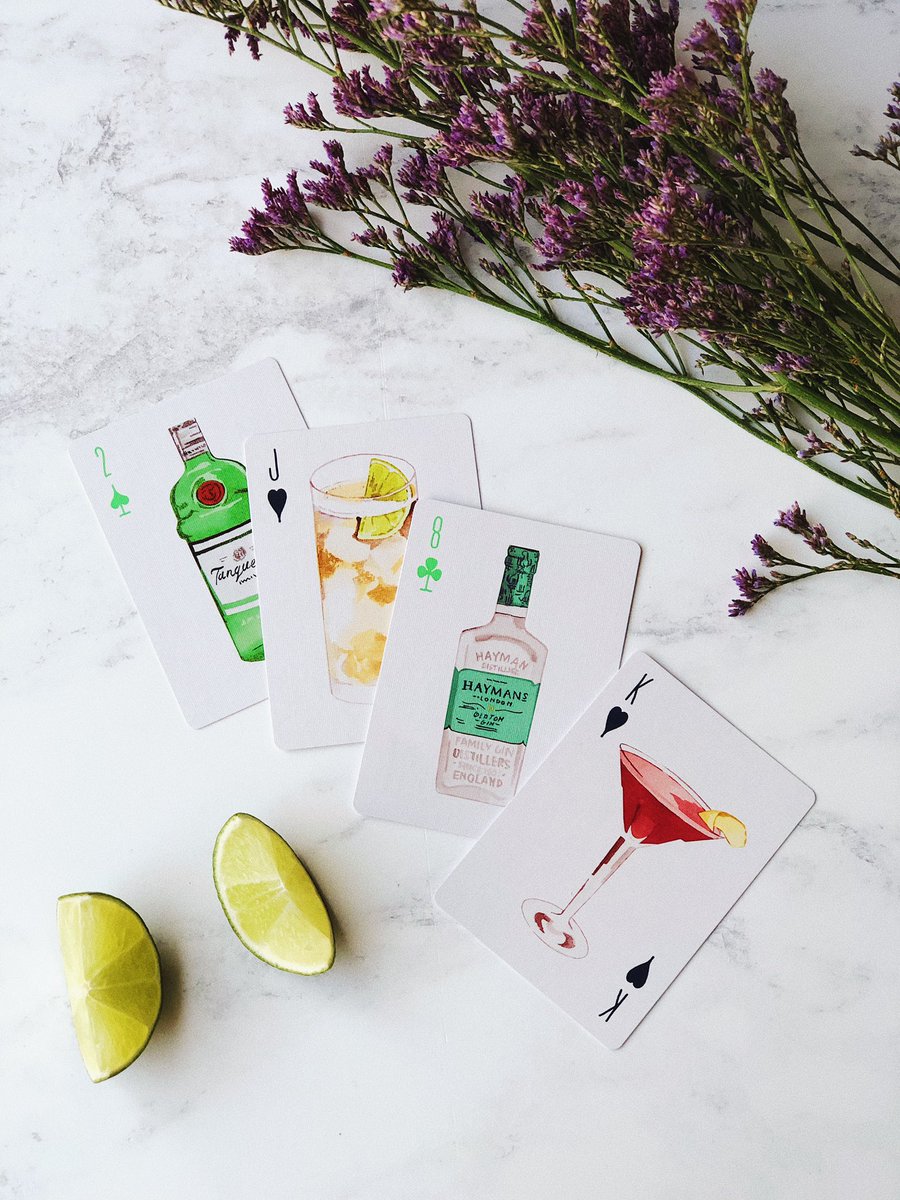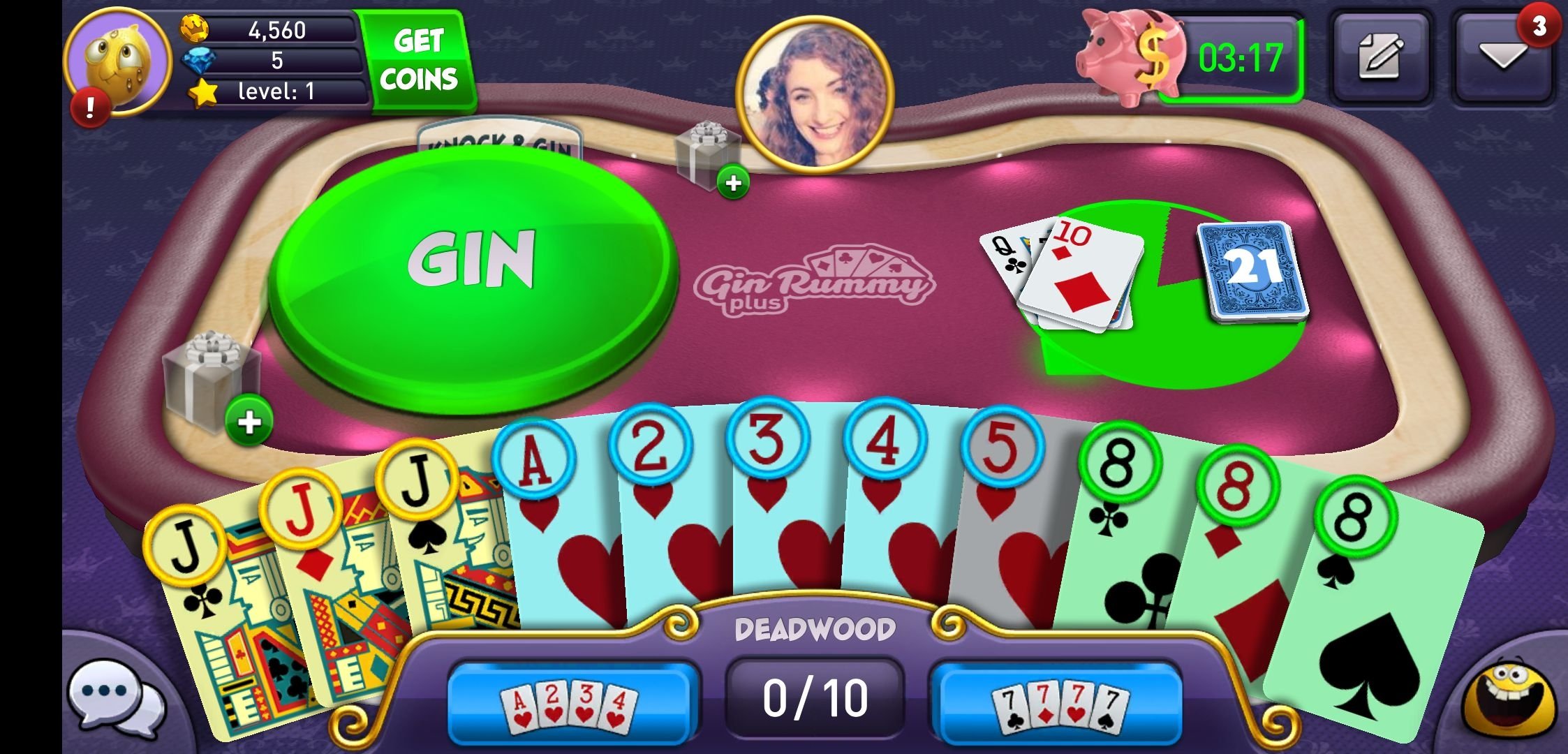Gin Rummy
- Gin Rummy Stars
- Gin Rummy Vs Rummy
- Gin Rummy Card Game
- Gin Rummy Io
- Free Gin Rummy Games Computer
- Gin Rummy App
What is Gin Rummy?
Gin Rummy, sometimes simply called “Gin”, is one of the most popular card games in the world. The rules of the Gin Rummy card game are part of its appeal, seemingly complex but easy to understand. As with other Rummy games, Gin Rummy is a game about building a winning hand by managing discards. The following guide covers this in further detail.
How to Play Gin Rummy?
- Going Gin and tallying your score The most difficult (and therefore rewarding) way to go out and win the game is to put all your cards into melds, which is called going Gin. If you go Gin, you score 25 points, plus the sum of whatever your opponent fails to make into complete combinations — her unconnected cards, or deadwood.
- Gin rummy, or simply gin, is a two-player card game created in 1909 by Elwood T. Baker and his son C. It is a variant of rummy.It has enjoyed widespread popularity as both a social and a gambling game, especially during the mid twentieth century, and remains today one of the most widely-played two-player card games.
Test your Gin Rummy skills in this fun version of the popular two-player card game! Choose between different opponents, each with a different playing style, select one who matches your skill level and try to earn the most points. Sort your cards to form sets and runs, keep an eye on your opponent and use the right strategy to win!
Gin Rummy is a game for 2 players, and can be played using the standard Anglo-American 52-card Poker deck. The game is one of the most popular variants of Rummy, and follows similar rules but with streamlining for a more fast paced game. Gin Rummy is less a game about chance, and more about making informed decisions.
Dealing
The dealer is determined by splitting cards, and the player getting a higher card becomes the dealer. Each player is then dealt 10 cards each. The remaining cards are placed aside to form the draw pile. The discard pile is then created by revealing the top of the draw pile.
Winning
The goal of the Gin Rummy card game is to form sets and sequences in your hand. Sets are cards of the same rank, but from a different suit. Sequences are consecutive cards from the same suit. Examples of sets and sequences are shown below.
A straight of 5 cards:
7♠ 8♠ 9♠ 10♠ J♠
A set of 4 cards:
2♠ 2♦ 2♣ 2♥
Unlike more traditional Rummy games, Gin Rummy can be prematurely ended by calling Knock or Gin. These will be discussed in their respective sections. The game ends once a player reaches 100 points.
Turns
Each turn, a player will draw 1 card. They can choose to draw from either the top of the draw pile or the discard pile. To end a turn, a player will discard 1 card of their choosing from their hand. Essentially, a player will always have 10 cards outside of their turns.
The non-dealer goes first, but the first revealed card can be claimed by either player to start their turn. If the non-dealer passes, the dealer gets the opportunity to claim that card.
When a player is satisfied with their hand, they can choose to end the round by either knocking or calling gin. This is indicated by discarding a card face-down at the end of a turn. The instructions for each are shown below.
Knocking
Knocking can only be done when the total value of unmatched cards in hand is lower than 10. The card values are shown in the Scoring section of the guide.
The player who knocks will reveal his hand with the melded combinations set aside. The other player then shows their hand, and gets a chance to lay off.
Laying Off
Laying off can be done in response to a player knocking. The knocking player cannot lay off. The player responding to the knock can play their unmatched cards into the melds of the knocking player. An example of a lay off is shown in the Hands section of the guide.
Since knocking off triggers the point calculation of the round, laying off allows a player to lower the amount of points granted to the knocking player. Points are awarded based on the difference between the value of unmatched cards, also known as the deadwood in hand.
Undercut
The undercut occurs when a player responding to a knock has less value in their deadwood cards after laying off than the knocking player. An example is shown below.
If an undercut occurs, the responding player gets awarded 10 points, as well as the point difference.
Gin
Calling gin is only allowed when there are no deadwood cards in hand. In other words, a player that calls Gin only has sets and sequences in hand. When gin is called, there is no lay off phase, and the player that calls gin gets a bonus of 30 points.
Big Gin
Knocking and calling gin occurs at the end of a turn. If a player has gin in hand, but chooses to risk a draw, they can call Big Gin. This is when the drawn card fits into the melds in hand, leaving no deadwood. This awards 50 points instead.
Gin Rules
Gin Rummy has specific rules that apply to specific situations, ensuring smooth gameplay.
Knock rules
Knocks can only be called if the total value of deadwood cards are less than 10. A player does not need to knock when their deadwood value is less than 10, they can choose to continue drawing to improve their hand further. The player who knocked cannot lay off cards to their opponent.
Gin/Big Gin rules
Gins can only be called when the value of deadwood is 0. When a player calls gin, the lay off phase is skipped. Due to the nature of the game, undercut is impossible, since there is no value lower than 0.
Undercut rules
Undercuts occur when the opposing player has a lower deadwood value than the knocking player. If both players have the same deadwood value, it is considered an undercut, and the undercut bonus goes to the responding player.
Melding rules
Melds have to consist of 3 cards or more. Depending on the variation of Gin Rummy being played, melds of 6 or more cards are not allowed.
Summary
In summary, the Gin Rummy rules are:

- Dealer is determined via deck splitting.
- Each player is dealt 10 cards each, 1 card at a time.
- The next card in the deck is placed face-up, forming the discard pile.
- The non-dealer goes first, and draws 1 either from the top of the draw or discard pile.
- When a player is satisfied with their hand, they can call for a knock or gin.
- A player can only call for a knock when their deadwood card value is less than 10.
- A player can respond to a knock by laying off cards into the melds of another player.
- A player cannot respond to gins.
Scoring & Deadwood
Gin Rummy scoring is based on the difference in deadwood value, as well as bonuses awarded from the undercut, gin and big gin. The typical scores for each are shown below:
- Undercut: 10 points
- Gin: 30 points
- Big Gin: 50 points
Apart from the bonuses, deadwood value is considered. These will fall below 10 points, since knocks can only be called with a deadwood value below 10. The calculation of deadwood value is shown below:
- 2 – 10: Face Value
- 10 – K: 10 points
- Ace: 1 point
- Joker: 20 points (when included)
Note that when a tie of deadwood score happens on a knock, the undercut is still awarded to the responding player.
The game ends with the first player reaching 100 points being granted the win.
Hands
Gin Rummy hands are all about building a winning hand, minimizing deadwood value by discarding unmatched cards each turn. Once a satisfactory hand is built, a player can knock, or in rare cases, call gin with a hand of only melds.
Melds have to include 3-5 cards, and examples are shown below:
A straight of 5 cards:
7♠ 8♠ 9♠ 10♠ J♠
A set of 4 cards:
8♠ 8♦ 8♣ 8♥
Illegal set of 2 cards:
7♦ 7♣
An example hand and the layoff phase is shown below. In this case, Player 1 calls for a knock.
Before the lay off phase, Player 1 clearly wins via score, but player 2 can lay off their J♥ and 7♥ to the first meld in Player 1’s hand. The updated scores are:

It can be observed that Player 2 now has less deadwood than Player 1. Hence, Player 2 has successfully undercut Player 1. Thus, Player 2 is awarded the difference of 4 points, along with the bonus of 10 points, getting a sum of 14 points this round.

Strategy & Tips
- The basis of Gin Rummy strategy is knowing when to knock. Ideally, a low Deadwood value is a good indicator that it is time to knock.
- Carefully consider discards. Sequences are easier to complete than sets, so do not hesitate to break sets during discards.
- Each card can only be used for 1 meld.
- Consider drawing from the discard pile. With the discard pile, you know for certain the card you will get, as opposed to the unknown draw pile.
- Count cards, since the standard deck does not have duplicates, you can make more informed decisions.
- Be careful when knocking. If your hand has simple sets to extend, the opposing player can lay off their cards.

Frequently Asked Questions
How many cards are dealt in Gin Rummy?
Each player receives 10 cards at the start of each round.
Gin Rummy Stars
Rummy vs Gin Rummy; what is the difference?
Rummy can be played by 2-6 players, whereas Gin Rummy is suitable for 2-4 players. Rummy also has more specific conditions for winning.
Can Gin Rummy be played with 3 players?
Yes. Gin Rummy can be adapted to 2-4 players by changing the starting deal amount.
How to win at Gin Rummy every time?
Counting cards, much like in other card games, can help you win more.

Gin Rummy Vs Rummy
What is deadwood in Gin Rummy?
Deadwood refers to the unmatched cards in hand, and are used for point calculation.
What are Aces worth in Gin Rummy
Gin Rummy Card Game
Aces are worth 1 point in Gin Rummy.
What is the significance of the name and how did it become famous?
Gin Rummy Io
Some versions of the history of the game claim its origin to be in the 20th century. It is believed the game’s name came from its inventor’s fondness of the alcoholic drink of Gin. The game became popular when it was adopted by Hollywood’s elite and famous movie stars back in the 1930’s. They liked playing this thrilling and fast game on the set during takes.
Free Gin Rummy Games Computer
Another reason for the Rummy games’ popularity is believed to be from the great depression period, when people did not have many financial resources to engage in outdoor entertainment activities, and turned to different ways to spend quality time with family and friends indoors.
Gin Rummy App
Also see: